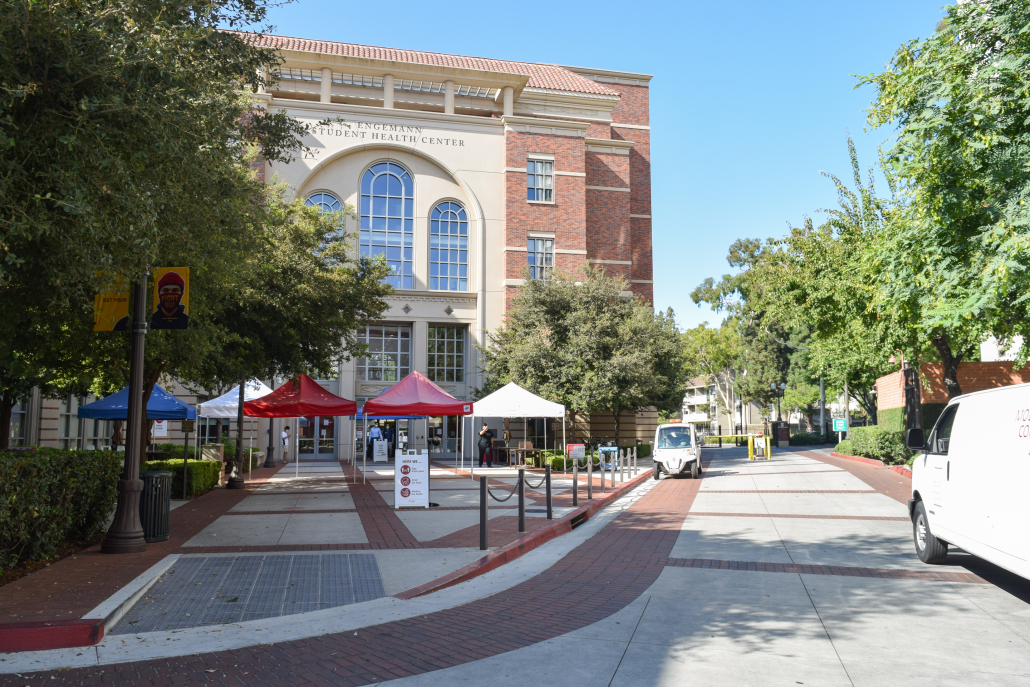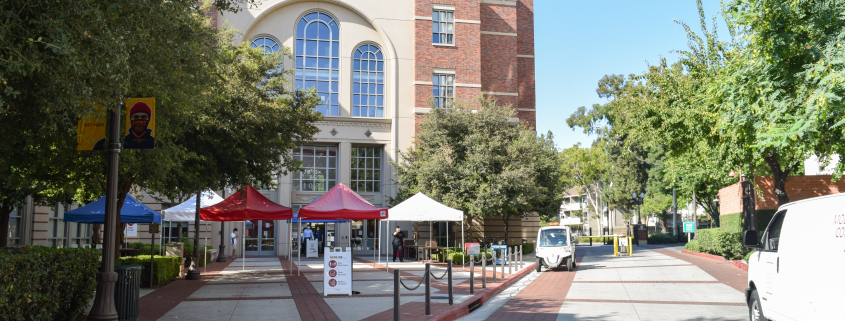Positivity rates decline as Fall recess approaches

USC has entered a “stable” period with the coronavirus as the weekly positivity rate continues its seven-week decline amid the approaching fall recess, Chief Health Officer Dr. Sarah Van Orman said in a USC Student Health briefing Tuesday.
Of the 32,369 tests administered last week, 26 students and three employees tested positive for the coronavirus. The student positivity rate decreased to 0.08% — the lowest reported rate of any period during the academic year since April 2020. In contrast, the positivity rate among faculty plateaued — standing steadily at 0.26%.
“[The numbers] are continuing to look very strong, we don’t have any outbreaks — we’re continuing to see the people that are testing positive and having severe disease are increasingly the unvaccinated,” Van Orman said.
As coronavirus trends on campus stabilize, Van Orman urged students to take precautions during the upcoming fall recess, a “vulnerable” period when some students travel and engage in high-risk activities associated with the coronavirus. For those who decide to travel, Van Orman said students should receive a coronavirus test before and after.
“We just want to remind people of the risk associated with travel, and particularly if you have traveled in a high risk environment or been in a part of the country where the community prevalence is higher [than Los Angeles], that you’re cautious when you get back and get tested on Monday or Tuesday,” Van Orman said.
Van Orman also encouraged students to practice mitigation efforts to reduce the likelihood of transmission to family and friends with the approaching holiday season.
“The most important thing is that, if you’re gathering in larger groups with people that you don’t know their vaccine status … is to gather outside,” Van Orman said. “For students who might be going home to visit vulnerable relatives … wear a mask indoors; it really does make a difference.”
Van Orman said Student Health met with Los Angeles County Public Health officials last week and “does not anticipate any changes for their guidelines for the time being.”
In a statement to the Daily Trojan, a spokesperson for the L.A. County Public Health Department confirmed that suggestion, citing the county’s “substantial” rate of transmission for not amending guidelines that require everyone, regardless of vaccination status, to wear masks in indoor settings.
“L.A. County does not have moderate transmission, and would need to have [moderate transmission] for a while to make sure we aren’t lifting a layer of protection too early,” the statement read.
While USC’s vaccination rate holds steady at 95%, surrounding neighborhoods in South Central report lower vaccination rates compared to local and state averages. As of Oct. 7, 70.3% of residents around the University Park Campus received at least one dose of the vaccine, compared to the 66.2% of residents near Exposition Park with at least a single shot.
Van Orman cited a study from the Centers for Disease Control and Prevention that demonstrates cases stemming from a university disproportionately affect broader coronavirus trends in the community. However, Van Orman highlighted the “important relationship” USC has with its community partners.
Despite signs of decreasing delta variant cases, Van Orman said a “significant increase” of students seeking campus-sponsored mental health resources and counseling has strained campus mental wellness resources.
“We’ve seen almost double the number of [first-appointment] intakes that we did in the Fall of 2019,” Van Orman said. “We are very busy; we are seeing a significant number of students and we do know that our data suggests that during the pandemic … College students in general saw significant increases in levels of depression, anxiety, as well as students who experienced significant losses during the pandemic, so we are seeing an increase in demand for services, and really significant numbers of students coming in.”
Van Orman expects the number of students who seek mental health resources to increase throughout the fall semester.
“We know that mental health needs among college campuses have been increasing dramatically for over 10 years now, and USC is no different than that,” Van Orman said. “So we are fortunate that we have many more resources than we did in the past, but we know there’s a lot of people who are in need and are reaching out for help.”

